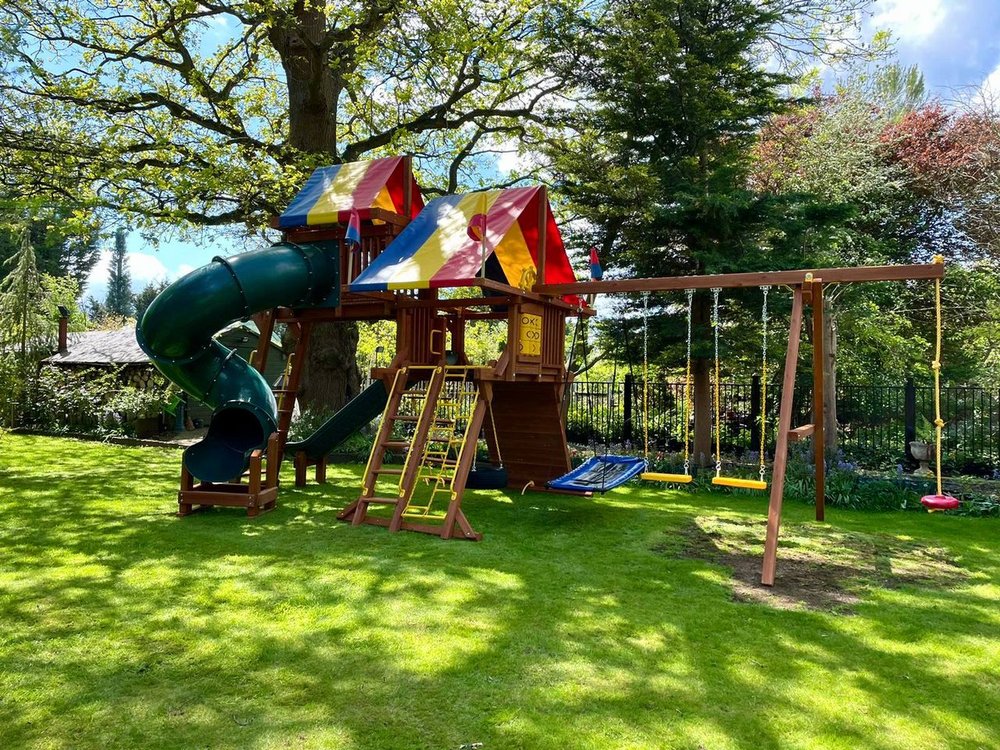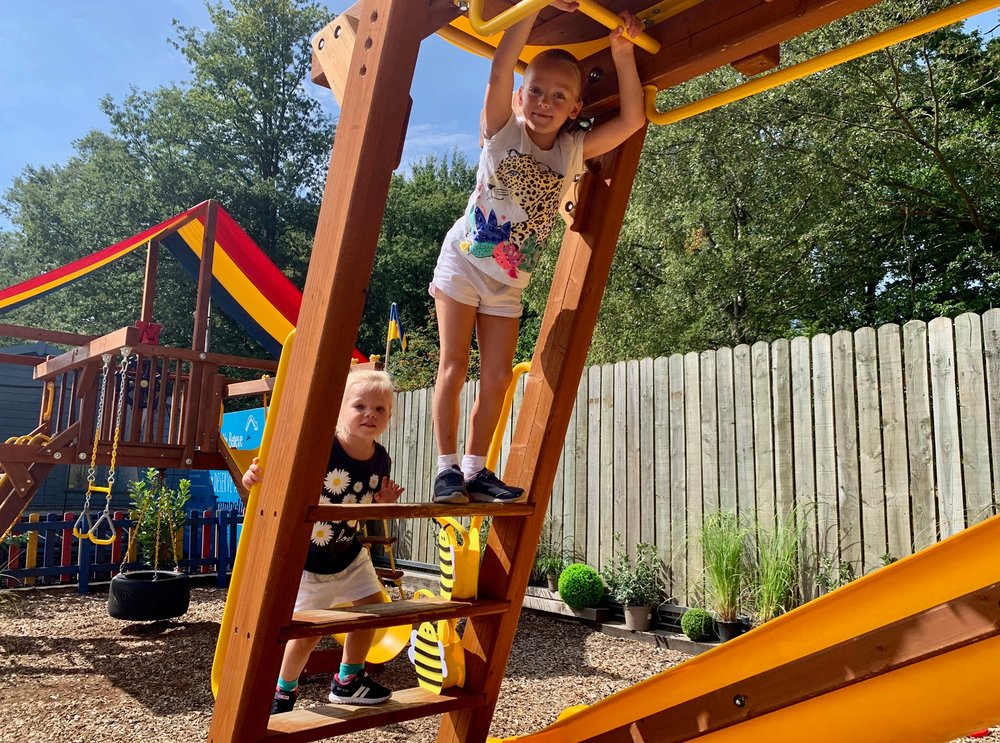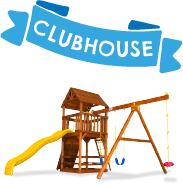Do Climbing Frames in the UK Need Anchoring?

The Importance of Anchoring your climbing frame
In general, anchoring is an essential step in the installation of many outdoor climbing frames. The UK is known for its unpredictable weather, from strong winds to heavy rains. Anchoring serves as a quick fix to these conditions by:
- Preventing toppling - Securing the base of the structure ensures it remains upright, even in gusty conditions.
- Enhancing stability - Children can play vigorously. Anchors ensure the frame doesn't shift or become unsteady during active play.
What anchoring systems are offered to anchor climbing frames?
Ground Anchors
- Description: Ground anchors are typically metal stakes that you drive into the ground to secure your climbing frame. They come in various designs, including spiral anchors and J-shaped anchors.
- Cost: Ground anchors are usually quite affordable, ranging from £10 to £30 per set, depending on the type and quality.
- Warranty: Warranties for ground anchors can vary, but most offer a limited warranty of 1 to 2 years.
- Durability: The durability of ground anchors depends on factors such as the quality of the material and the type of soil in your area. With proper installation and maintenance, they can last for several years.
Concrete Anchors
- Description: Concrete anchors involve digging holes and pouring concrete to create a solid foundation for your climbing frame. This method provides excellent stability
- Cost: Concrete anchors are more expensive, as they require materials like concrete mix and rebar. Costs can range from £50 to £150 or more.
- Warranty: Typically, there is no specific warranty for the concrete itself, but the overall stability it provides can extend the life of your climbing frame.
Sandbag Anchors
- Description: Sandbag anchors involve placing heavy sandbags or weight bags on the legs or corners of your climbing frame to keep it steady.
- Cost: Sandbags are a cost-effective option, ranging from £5 to £20 each, depending on the size and weight.
- Warranty: There is typically no warranty for sandbag anchors themselves, but they are a versatile and reusable solution.
- Durability: The durability of sandbag anchors depends on the quality of the bags and the weight you use. They can last for several years and are easy to replace when needed.
Strap & Ratchet Anchors
- Description: Strap and ratchet anchors involve securing your climbing frame to nearby trees or structures using heavy-duty straps and ratchet mechanisms.
- Cost: Prices vary depending on the length and strength of the straps but typically range from £20 to £50.
- Warranty: Warranty terms can vary, but reputable brands often offer a 1 to 2-year warranty.
- Durability: The durability of strap and ratchet anchors depends on the quality of the materials. They are generally robust and can last for many years when used properly.

Rainbow Climbing frames | Better than the rest
While many climbing frames in the UK require anchoring, Rainbow Climbing Frames stand out as the anomaly. Here's why:
- Exceptional Build Quality - Rainbow Climbing Frames are built with a focus on quality and sturdiness. The use of robust, thick timber ensures that the frame itself has a substantial weight, making it virtually Impossible to be upturned or shifted.
- Broad and Stable Base Design - These systems are designed with a wide base, which significantly lowers the centre of gravity. This design means that even during energetic play, the chances of the system toppling over are eliminated.
- Innovative Bracket System - Rainbow Play employ an advanced bracket system that secures various parts of the frame together, enhancing the overall rigidity and stability of the structure.
- Safety Testing - Rainbow Play are subjected to rigorous safety testing, ensuring they meet and often exceed safety standards without the need for additional anchoring.
- Integrated Features - Many designs within the Rainbow Play range integrate features like swings and slides that act as counterbalances. These integrated features ensure that weight is evenly distributed across the structure.
What Surfaces can you not Anchor a climbing frame on?
When it comes to anchoring climbing frames, it's crucial to choose an appropriate surface to ensure the safety and stability of the structure. Here are some surfaces on which you should generally avoid anchoring a climbing frame:
- Solid Rock or Concrete: Just like with other structures, anchoring a climbing frame directly onto solid rock or concrete surfaces is not feasible without specialised equipment. These surfaces are extremely hard and typically cannot be penetrated by standard ground anchors or stakes.
- Tile or Paver Patios: Anchoring a climbing frame on tile or paver patios can be problematic, as these surfaces are prone to cracking or breaking when drilled. It's advisable to avoid drilling into these surfaces to maintain their integrity.
- Elevated Decks with Limited Structural Support: Anchoring a climbing frame on an elevated wooden deck can be done, but it depends on the deck's structural strength. If your deck lacks the necessary structural support, it's not a suitable surface for anchoring a climbing frame. In such cases, consider reinforcing the deck or exploring alternative anchoring options.
- Sandy or Loose Soil: While it's generally possible to anchor a climbing frame in soil, extremely loose or sandy soil may not provide the necessary stability. In such cases, the climbing frame may wobble or become unstable. To address this issue, you might need to improve the soil's stability through methods like adding concrete footings or ground reinforcement.
- Areas with High Water Tables or Frequent Flooding: If your chosen installation area has a high-water table or is prone to flooding, it can undermine the stability of ground anchors over time. In such situations, it's advisable to explore alternative installation methods or consider elevating the climbing frame above ground level.
When choosing the location for your climbing frame, always consider the manufacturer's guidelines and recommendations for anchoring. They often provide specific instructions on suitable surfaces and installation methods to ensure the safety and durability of the climbing frame. Additionally, consulting with a professional or seeking guidance from the manufacturer can help you make informed decisions about where and how to anchor your climbing frame for optimal safety and enjoyment.
Considerations for Rainbow Play Owners
While Rainbow Climbing Frames don't require traditional anchoring, there are certain considerations owners should keep in mind:
- Proper Installation: - Ensure that your Rainbow Play System is installed on level ground. This enhances its natural stability and prevents any potential wobbling or tilting.
- Regular Maintenance Checks - As with any play equipment, periodic checks are essential. Even if the system doesn't need anchoring, ensure all bolts and brackets are tight and that no parts are worn or damaged.
- Monitor Play - While the system is designed for vigorous play, it's always a good idea to keep an eye on children, ensuring they're using the equipment as intended.
Conclusion
Anchoring is a critical consideration for many climbing frames in the UK due to the region's climatic conditions and safety regulations. However, thanks to exceptional design and quality, Rainbow Climbing Frames have bypassed this requirement without compromising on safety.
For those considering investing in a climbing frame, it's always essential to understand the specific requirements and recommendations for the model you choose. If you're opting for a Rainbow Play System, you can rest easy knowing that the company has prioritised safety, stability, and quality in their designs.
Always ensure your climbing frame, whether it's from Rainbow or another brand, is installed and maintained correctly. This way, children can enjoy countless hours of safe, imaginative play in your garden.



